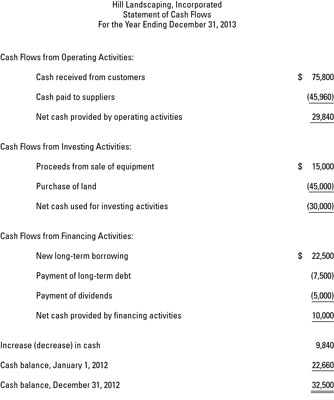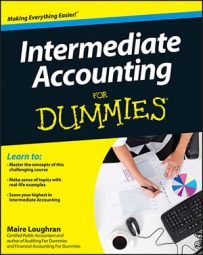The purpose of the statement of cash flows is to show cash sources and uses during a specific period of time — in other words, how a company brings in cash and for what costs the cash goes back out the door. Therefore, the statement of cash flows contains certain components of both the income statement and the balance sheet.
The statement of cash flows has three different sections classifying all cash receipts and payments:
Operating: The sources and uses of cash in the operating section come from revenue, expenses, gains, losses, and other costs.
Investing: This section shows sources and uses of cash from debt and equity purchases and sales; purchases of property, plant, and equipment; and collection of principal on debt.
Financing: You report activities such as long-term liability (paying or securing loans beyond a period of 12 months from the balance sheet date) and equity items (sale of company stock and payment of dividends) in the financing section.

Explanatory notes accompany the financial statements and contain information that isn’t readily available through review of the figures on the statements. They show how or why a company handles various transactions. For example, notes to the financial statements tell the reader what type of method the company uses to depreciate its assets.

